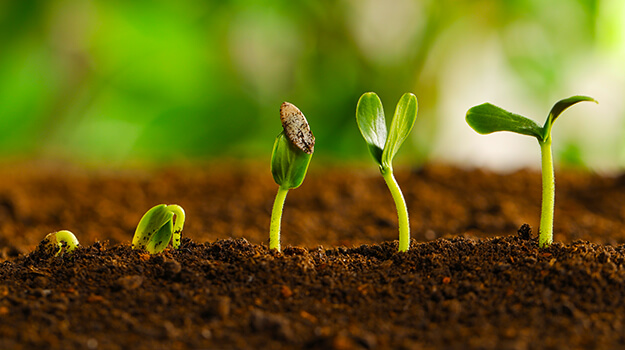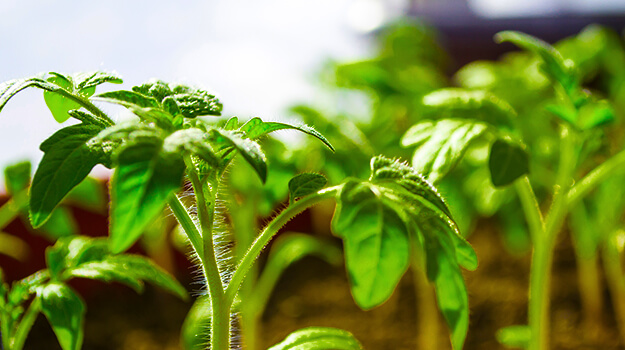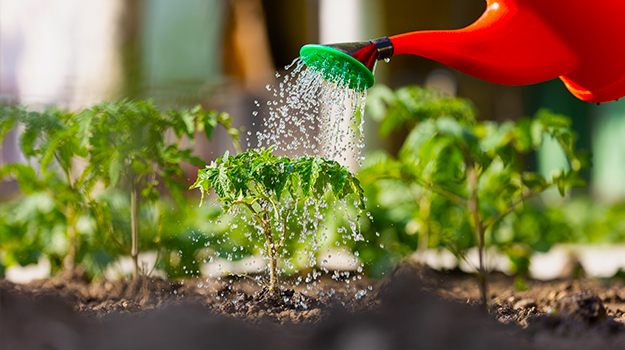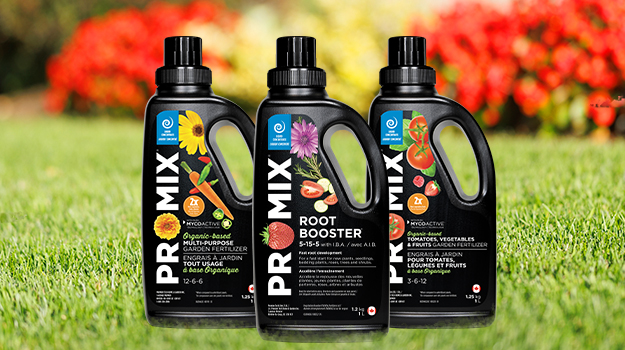The question many people ask is: should I fertilize seedlings?
The answer is yes, but not just any time, any way or using any product.
While a lack of fertilization can delay seedling growth, improper fertilization can lead to their demise.
We explain everything you need to know about fertilizing seedlings in this article.
Why fertilize seedlings?
Unlike our Organic Seed Starting Mix, which contains an organic fertilizer and a growth stimulant, most seed starting mixes prioritize good drainage over nutrient input.
Obviously, to ensure seed germination, a sterile and well-drained environment is essential, which most seed starting mixes provide. When the seed germinates, it unfolds a first set of leaves called “cotyledons”. The nutrients that allow them to develop are contained inside the seed.
This source of nutrients is sufficient for the seed until it develops its first true leaves and begins the process of photosynthesis. Before this stage, fertilization could be seriously harmful.
NOTE: Cotyledons, which are shaped differently from true leaves, are found inside the seed before germination. They are just waiting for the right conditions to unfold!
How does the plant feed itself after?
The next set of leaves will also need nutrients to develop. Beyond the process of photosynthesis, which allows the plant to produce its own food, quality potting soil provides the nutrients it needs.
However, the amount of substrate is limited in trays and other starter containers. Nutrients eventually become depleted, and plants develop less vigorously.
Fertilizing helps maintain regular growth and promotes stronger seedlings that will better withstand transplanting to the garden.
When to fertilize seedlings?
A seed is composed of a small embryonic plant and a significant energy reserve. This will be sufficient while the seedlings develop roots for nutrition and leaves that allow photosynthesis.
Once they have their first leaves and the beginnings of a root system, the seedlings will have to find the nutrients they need elsewhere. To promote healthy and robust growth, you need to know when to start fertilizing. Here, the WHEN is as important as the WHAT and the HOW.
You can start fertilizing seedlings as soon as the plants have 4 to 6 true leaves. However, you must take their condition into account and avoid fertilizing stressed seedlings.
Before fertilizing, give them a chance to strengthen by ensuring they have an environment conducive to their proper development.
PRO TIP: Most problems can be avoided or resolved by providing seedlings with a favourable environment. Using our Organic Seed Starting Mix can prevent various problems related to inadequate watering. It helps retain moisture, ensures good drainage and promotes water and nutrient absorption.
To learn about the various problems that can arise with seedlings and how to solve them, read: Seed starting: problems and solutions
How to fertilize seedlings
As with any fertilizer, less is always better than too much. Too much fertilizer can be very damaging to seedlings.
If you want to start fertilizing as early as possible, once the seedlings have 4 to 6 true leaves, opt for a liquid fertilizer diluted to a quarter of the manufacturer's recommendation, twice a week.
Eventually, you can increase to half the recommended dose. Then, when your seedlings are almost ready to be planted, you can give them the recommended dose, but only every 7 to 10 days.
What is the best fertilizer for seedlings?
First and foremost, choose a water-soluble fertilizer or a liquid fertilizer. Easy to dose, it provides a lower fertilizer concentration, suitable for your young plants.
Look for a balanced multi-purpose fertilizer with equal amounts of nitrogen (N), phosphorus (P) and potassium (K), or one with a higher nitrogen-to-phosphorus ratio. You can use our Organic-Based Garden Fertilizer for Tomatoes, Vegetables and Fruits 3-6-12 at this stage. Our Organic-Based Multi-Purpose Garden Fertilizer 12-6-6 can be used after, before outdoor transplanting. Then use ROOT BOOSTER 5-15-5 when you transplant in the garden.
At this stage, young plants need phosphorus to promote vigorous root growth and facilitate photosynthesis. Nitrogen is also important for developing green growth and encouraging healthy foliage. Too much nitrogen can result in spindly, brittle stems.
Also try PRO-MIX ROOT BOOSTER 5-15-5. Ideal for seed beds and young plants, it contains two growth regulators to stimulate rapid and vigorous root development as well as good plant growth.
NOTE: Granular fertilizers can be used later in the vegetable garden, once the plants have matured. They take longer to decompose, as most are slow-release. They are useful in the long term, as they require less work. However, they don't provide nutrients to plants instantly like liquid fertilizers do.





